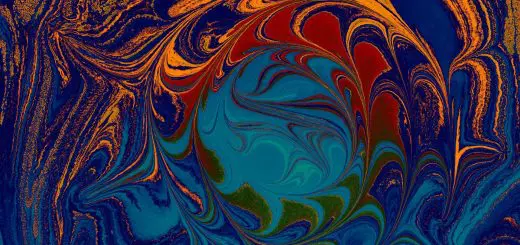Chupacabra: Mythical Creatures of the American Southwest

Looking for more amazing products? Check out our online store and explore our collection here! Happy shopping!
Before diving in, please note: This post is for informational purposes only. If you’d like to know more about how we approach topics, feel free to check out our friendly Disclaimer Page.
Hey there, amazing readers! 
We’re committed to delivering quality posts, and your support (even just sticking around despite the ads) means everything to us. So, bear with us, and thanks for helping us keep the good vibes rolling. Now, on to the fun stuff!
TRANSLATE BUTTON AT THE END OF THE ARTICLE
A Quick Overview
The Chupacabra, a mythical creature of the American Southwest, has long captured the imagination of people with its mysterious and elusive nature.
Described as a blood-sucking monster with a reptilian appearance, the Chupacabra is said to attack livestock and drain them of their blood.
In this article, we will delve into the origins of the Chupacabra myth, sightings and encounters, characteristics, theories and explanations, its presence in popular culture, hoaxes and frauds, folklore, comparisons with other cryptids, its significance in Native American mythology, its portrayal in modern times, and strategies to protect livestock from this legendary creature.
The Legend of the Chupacabra
The legend of the Chupacabra originated in Puerto Rico in the 1990s, where reports of mysterious livestock deaths began surfacing.
Eyewitnesses described a creature with large red eyes, spikes down its back, and a penchant for draining animals of their blood.
The name "Chupacabra" translates to "goat-sucker," reflecting its alleged preference for goats and other livestock.
Over time, sightings of the Chupacabra spread beyond Puerto Rico to other parts of the American Southwest, fueling speculation and intrigue about this enigmatic creature.
Origins of the Chupacabra Myth
The origins of the Chupacabra myth are shrouded in mystery and controversy.
Some believe that the Chupacabra is a product of mass hysteria or a modern urban legend, while others attribute its existence to folklore and ancient mythology.
One theory suggests that the Chupacabra may have been inspired by sightings of mangy dogs or coyotes with a parasitic infection, leading to their unusual appearance and behavior.
Regardless of its origins, the Chupacabra has become a prominent figure in the realm of mythical creatures, captivating the imagination of believers and skeptics alike.
Sightings and Encounters
Reports of Chupacabra sightings and encounters have been documented across the American Southwest, from Texas to New Mexico and beyond.
Eyewitnesses claim to have seen the creature lurking near livestock pens or in remote areas, leaving behind a trail of mutilated animals.
Despite efforts to capture or study the Chupacabra, no concrete evidence of its existence has been found, leading to ongoing debate and speculation among researchers and enthusiasts.
The mystery surrounding the Chupacabra continues to intrigue and perplex those who seek to unravel its secrets.
Characteristics of the Chupacabra
The Chupacabra is often described as a small, reptilian creature with gray or green skin, sharp teeth, and glowing red eyes.
Some accounts depict it as having spikes or quills along its back, similar to a dinosaur or mythical dragon.
Its alleged ability to drain animals of their blood has led to comparisons with vampires or other supernatural beings.
Despite variations in eyewitness reports, certain characteristics such as its elusive nature and nocturnal habits remain consistent in descriptions of the Chupacabra.
Theories and Explanations
Numerous theories and explanations have been put forth to account for the phenomenon of the Chupacabra.
Some skeptics argue that sightings may be misidentifications of known animals or hoaxes perpetuated for attention or profit.
Others speculate that the Chupacabra could be a genetic experiment gone awry, escaped from a research facility or military base.
Still, others view the Chupacabra as a symbol of ecological imbalance or cultural fears, reflecting societal anxieties about the unknown and the supernatural.
The diversity of theories surrounding the Chupacabra underscores its enigmatic nature and enduring appeal as a subject of speculation and debate.
Chupacabra in Popular Culture
The Chupacabra has made its mark in popular culture through various mediums such as films, television shows, books, and artwork.
Its fearsome reputation and mysterious allure have inspired countless creative works, ranging from horror movies to children’s cartoons.
The Chupacabra’s iconic status as a cryptid of the American Southwest has cemented its place in the pantheon of legendary creatures, captivating audiences with its aura of danger and intrigue.
Whether portrayed as a menacing predator or a misunderstood creature, the Chupacabra continues to capture the imagination of storytellers and audiences alike.
Chupacabra Hoaxes and Frauds
Despite the lack of concrete evidence for the existence of the Chupacabra, numerous hoaxes and frauds have been perpetuated over the years to perpetuate the myth.
Photos and videos claiming to show the Chupacabra have circulated on the internet, often debunked as elaborate hoaxes or misrepresentations of known animals.
In some cases, individuals have fabricated sightings or staged fake encounters to attract attention or capitalize on the public’s fascination with the supernatural.
The prevalence of hoaxes surrounding the Chupacabra underscores the challenges of separating fact from fiction in the realm of mythical creatures.
Chupacabra in Folklore
The Chupacabra has become a prominent figure in folklore and urban legends, embodying fears and anxieties about the unknown and the supernatural.
Its reputation as a blood-sucking monster that preys on livestock has cemented its place in the collective imagination, inspiring cautionary tales and cautionary tales about the dangers of the wild.
Stories of encounters with the Chupacabra have been passed down through generations, blending elements of truth and fiction to create a compelling narrative that resonates with believers and skeptics alike.
The Chupacabra’s presence in folklore reflects humanity’s enduring fascination with the mysterious and the unexplained.
Chupacabra vs. Other Cryptids
The Chupacabra is often compared to other cryptids, such as Bigfoot, the Loch Ness Monster, and the Mothman, due to its elusive nature and mythical status.
While some cryptids have garnered more attention and scientific scrutiny, the Chupacabra remains a subject of debate and speculation among researchers and enthusiasts.
Its unique characteristics and purported behavior set it apart from other legendary creatures, adding to its mystique and allure as a cryptid of the American Southwest.
The parallels and distinctions between the Chupacabra and other cryptids highlight the diversity and complexity of the world of mythical creatures.
Chupacabra in Native American Mythology
In some Native American cultures, the Chupacabra is viewed as a supernatural being with connections to the spirit world and the natural elements.
Stories of encounters with the Chupacabra have been passed down through oral traditions, blending indigenous beliefs with contemporary folklore to create a rich tapestry of mythology and legend.
The Chupacabra’s presence in Native American mythology reflects the enduring significance of mythical creatures in indigenous cultures, serving as a symbol of spiritual power and ancestral wisdom.
Its portrayal in Native American mythology adds a layer of depth and complexity to the legend of the Chupacabra, highlighting its cultural and spiritual significance.
Chupacabra in Modern Day
In modern times, the legend of the Chupacabra continues to captivate and intrigue audiences around the world, with sightings and encounters reported in various countries beyond the American Southwest.
The Chupacabra has become a global phenomenon, inspiring curiosity and speculation among believers and skeptics alike.
Its enduring presence in popular culture, folklore, and mythology underscores its status as a legendary creature with a lasting impact on the human imagination.
Whether viewed as a symbol of fear or a symbol of wonder, the Chupacabra remains a potent symbol of the unknown and the supernatural in the modern era.
Protecting Livestock from the Chupacabra
Farmers and ranchers in regions where Chupacabra sightings have been reported often take precautions to protect their livestock from potential attacks.
Some strategies for safeguarding animals from the Chupacabra include:
Installing motion-activated lights or cameras to deter nocturnal predators.
Securing livestock pens with sturdy fencing and locks to prevent unauthorized entry.
Using guard animals such as dogs or llamas to alert to potential threats and defend against predators.
Conducting regular patrols of pastures and fields to monitor for signs of unusual activity or animal injuries.
Seeking assistance from wildlife experts or local authorities to investigate reports of livestock mutilations and unusual animal behavior.
By implementing these proactive measures and remaining vigilant, farmers and ranchers can help protect their livestock from potential threats posed by the mysterious and elusive Chupacabra.
Conclusion
The legend of the Chupacabra, a mythical creature of the American Southwest, continues to fascinate and intrigue audiences with its enigmatic nature and mysterious origins.
From its humble beginnings in Puerto Rico to its global presence in popular culture and folklore, the Chupacabra remains a potent symbol of the unknown and the supernatural.
Despite the lack of concrete evidence for its existence, the Chupacabra’s enduring appeal as a cryptid of the American Southwest underscores its status as a legendary creature with a lasting impact on the human imagination.
Whether viewed as a fearsome predator or a misunderstood creature, the Chupacabra’s legacy as a symbol of mystery and intrigue endures in the modern era and beyond.

The Enlightenment Journey is a remarkable collection of writings authored by a distinguished group of experts in the fields of spirituality, new age, and esoteric knowledge.
This anthology features a diverse assembly of well-experienced authors who bring their profound insights and credible perspectives to the forefront.
Each contributor possesses a wealth of knowledge and wisdom, making them authorities in their respective domains.
Together, they offer readers a transformative journey into the realms of spiritual growth, self-discovery, and esoteric enlightenment.
The Enlightenment Journey is a testament to the collective expertise of these luminaries, providing readers with a rich tapestry of ideas and information to illuminate their spiritual path.
Our Diverse Expertise
While our primary focus is on spirituality and esotericism, we are equally passionate about exploring a wide range of other topics and niches 

To ensure we provide the most accurate and valuable insights, we collaborate with trusted experts in their respective domains 
Our blog originally focused on spirituality and metaphysics, but we’ve since expanded to cover a wide range of niches. Don’t worry—we continue to publish a lot of articles on spirituality! Frequently visit our blog to explore our diverse content and stay tuned for more insightful reads.
Hey there, amazing reader! 
Check out our store here and take a peek at some of our featured products below! Thanks for being awesome!












